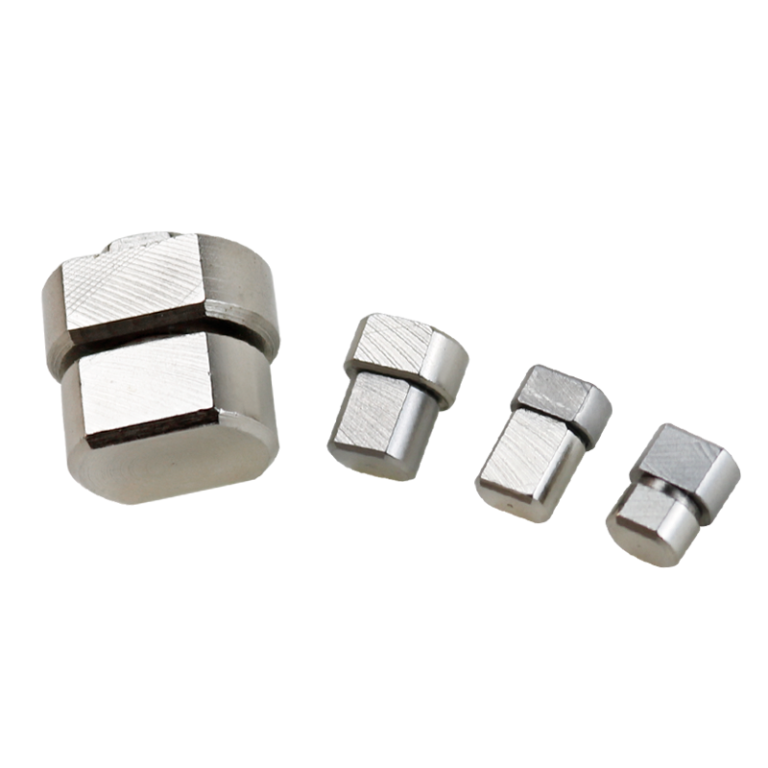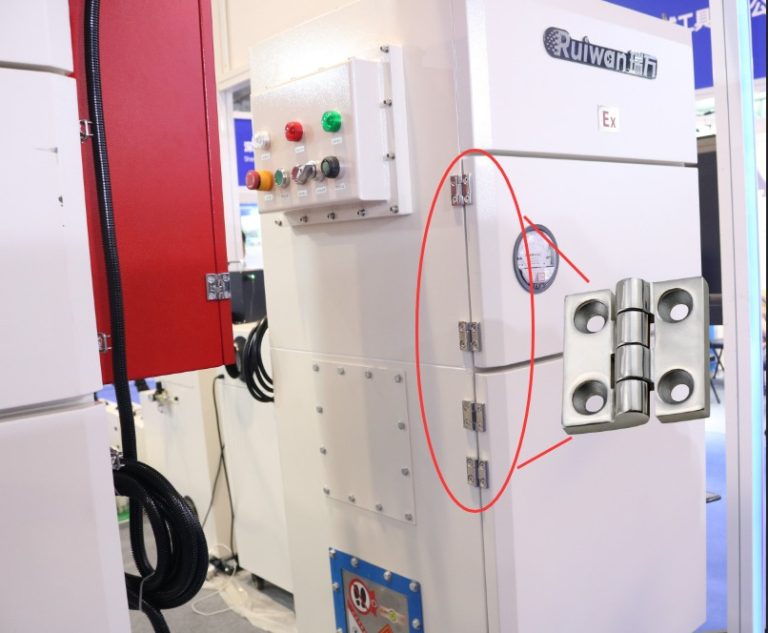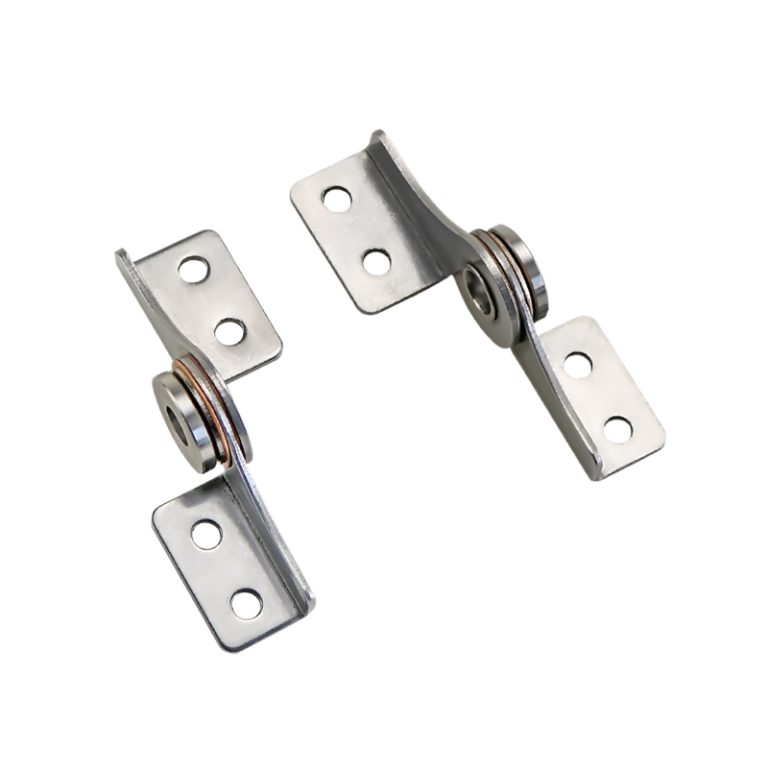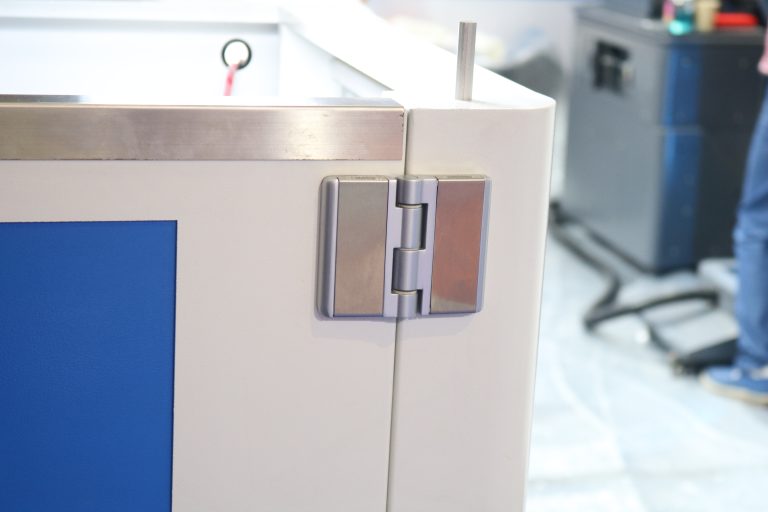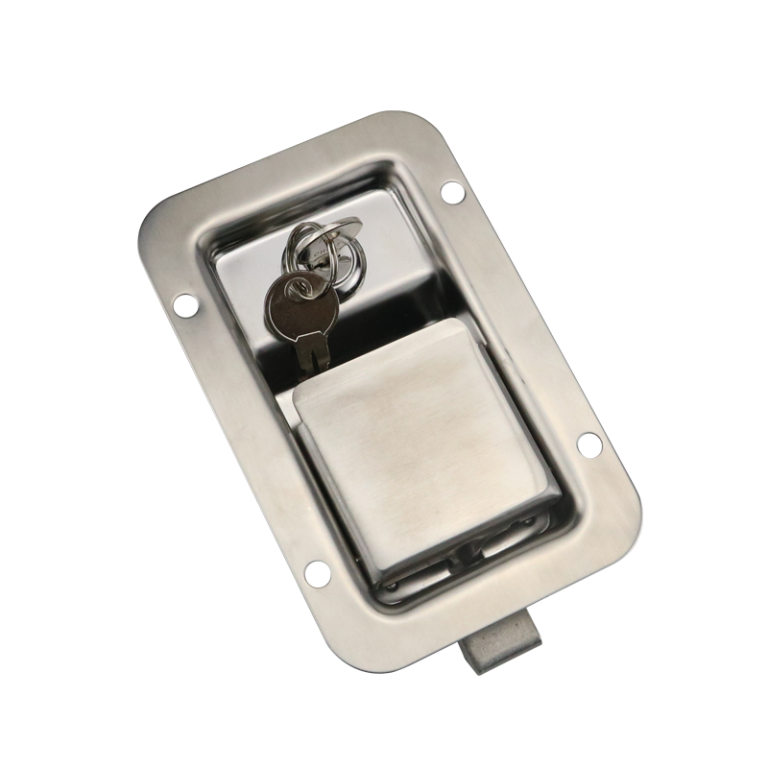HTAN is one of the leading manufacturers of industrial hinges, handles and latches in China.
-
+86 13720060320
-
julius@haitangs.com

The Ultimate Guide to Push-to-Open Latches for Industrial Cabinets
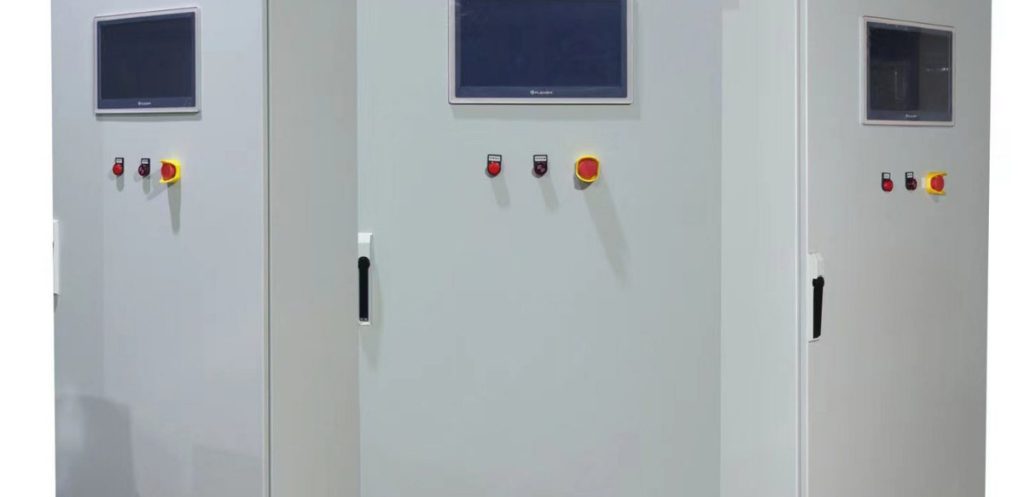
In industrial environments, cabinet doors are frequently opened and closed. Push-to-open latches are a popular mechanism for this purpose.
Pressing the latch retracts it, freeing the door to open. Upon release, it springs back automatically and latches onto the door frame’s strike plate.
This entire process is quick, simple, and efficient.
Basic Structure of Push-to-Open Latches
Components of Push-to-Open Latches
Panel (housing)
This is the visible part mounted on the cabinet door, where the operating buttons are located. It not only protects the internal mechanism but also defines the latch’s external appearance and affects installation compatibility.
Pushbutton Mechanism
This is the core operating part. When the button is pressed, it actuates an internal linkage or bevel that overcomes the spring force and pulls the latch back. When the button is released, the spring force resets the button and pushes the latch out. The quality of this spring directly affects the feel and longevity of a pushbutton latch.
Latching Device
Usually a metal tongue or ball. When the latches is closed, it pops out and snaps into the locking seat fixed to the door frame to achieve locking. Some pushbutton latches use a hooked latch to provide greater holding power.
Mounting Base or Latch
This is the metal part that is secured to the cabinet door frame. This is where the latch or shackle snaps into place for locking. It must be positioned in exact alignment with the latches body.
Auxiliary Parts
These small parts are important. For example: Seal: Used for waterproof and dustproof pushbutton latches to ensure protection class (e.g. IP65/IP67). Dust cap: Covers the mounting screw holes for improved protection and aesthetics. Washers/cushions: Reduce vibration and noise, protect the cabinet panel.
Key Materials of the push-to-open latches
Common Materials
Stainless Steel (304 / 316)
304 is widely used for its excellent corrosion resistance. 316 includes molybdenum and is suited for highly corrosive environments (e.g. coastal, chemical, food plants). Longer life but higher cost.
Zinc Alloy
Die-cast molded and cost-effective. Surface treatments allow for various colors. Not as strong or corrosion-resistant as stainless steel. Suitable for indoor cabinets with budget limits.
Aluminum Alloy
Very lightweight. Suitable for mobile or weight-sensitive applications. Often anodized for corrosion resistance.
Thermoplastic Rubber (TPE) / Silicone Rubber
Used for seals and cushions. Good elasticity and aging resistance. Key to waterproof and dustproof performance.
Common Types of Push-to-Open Latches
Classification by Function
Bouncing latch
Basic type. Press to open, release to latch.
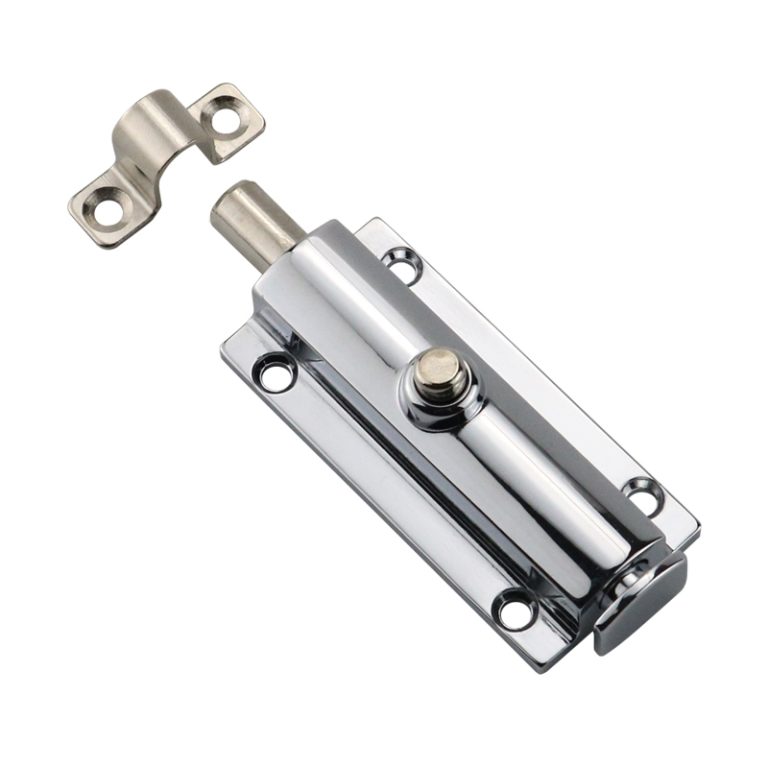
quarter-turn Latch
Mechanical locking devices for cabinet doors, equipment doors or control panels

Waterproof and Dustproof (IP65 / IP67)
For outdoor or cleanroom environments. Sealed design, stainless steel construction for durability.
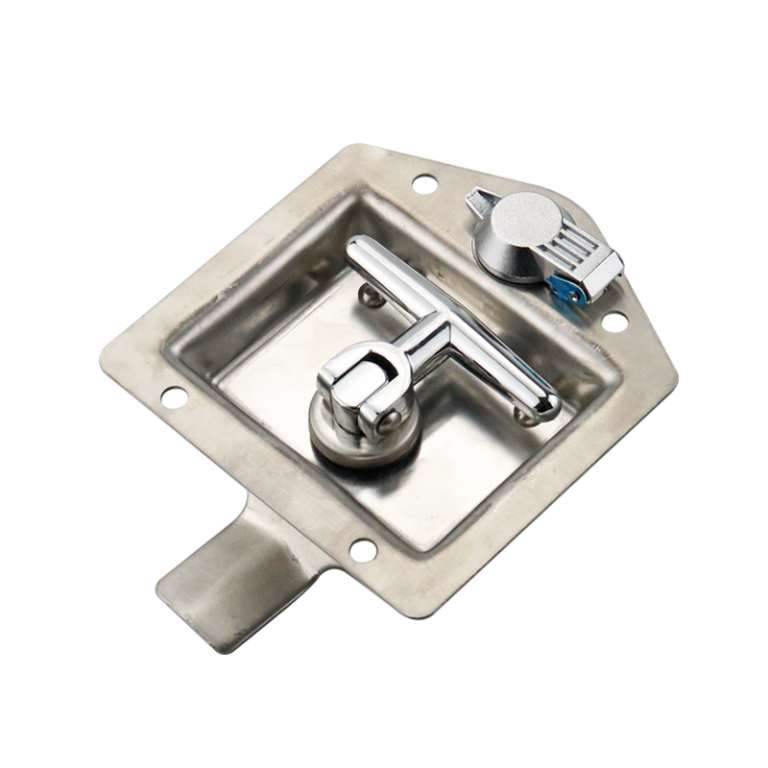
Classification by Installation Method
Panel Embedded Installation
Requires a cutout in the panel. Installed from the outside and fixed from the inside.
External Surface Mounting
Attached to the outer panel surface with screws. No large hole required. Suitable for thin panels.
Hidden Installation
Fully mounted inside the panel. Minimal appearance and high security, but harder to install or maintain.
Application Scenarios and Industry Requirements
Typical Use Cases
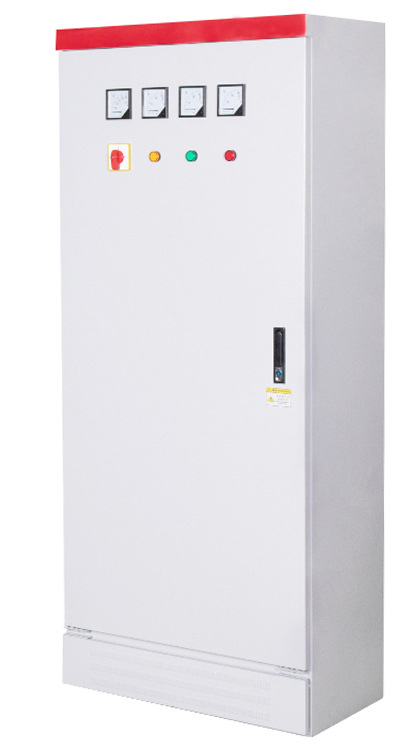
Industrial Control Cabinets (PLC, Inverter Cabinets)
For frequent access by engineers. One-handed operation improves efficiency.

Communication Cabinets / Server Cabinets
For rapid maintenance in data centers and base stations.

Medical Equipment Enclosures
For quick sterilization, consumable replacement, or basic maintenance.
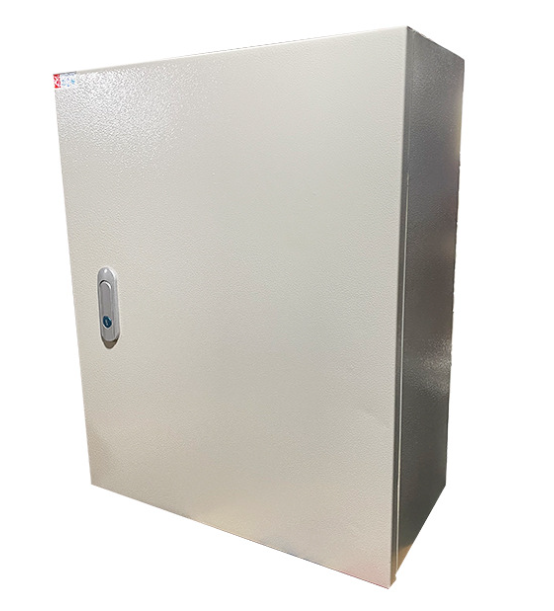
Outdoor Power Boxes (Distribution, Control Boxes)
Must withstand sun, rain, and dust. High protection grade is essential.
Selection of Key Factors
Selection Considerations
Match the Mounting Hole Size with the Panel Thickness
Ensure compatibility. Incorrect sizing can lead to installation failure or loose locks.
Frequency of Use and Life Requirements
High-use scenarios require long-life push locks.
Protection Level (IP, Corrosion)
IP65/IP67 for outdoor, dusty, humid. IP40 for dry clean rooms. 316 stainless steel for highly corrosive environments.
Locking / Key Management Features
Choose latches with cylinders if restricted access is needed. Consider your key system.
Preferred Mode of Operation
Ensure one-handed or specific operation is supported.
Matching Component Compatibility
Housing: Must match latch type and frame structure. Seals: Fit tightly with no gaps. Panel Strength: Must support repeated pressing without deformation.
Installation and Maintenance Key Points
Installation Precautions
Accurate Opening
Follow lock installation drawings. Clean hole burrs.
Align the latches Seat
Ensure the latch and latch seat are perfectly aligned.
Avoid Assembly Stress
Tighten screws diagonally and evenly to avoid distortion.
Check the Action
Test opening and closing to ensure smooth operation.
Regular Lubrication and Cleaning Recommendations
Lubricate
Light lubricant on spring and moving parts.
Cleaning
Dry cloth for dust and oil. Damp cloth in dirty environments, followed by drying. Avoid strong chemical cleaners.
Common Troubleshooting and Replacement Guidelines
Pressing Effort / Stuck
Clean or lubricate. Check for internal damage.
Latch Does Not Eject / Weak Return
Check and replace spring if needed.
Door Cannot Close / Pops Open
Inspect latch and seat alignment. Replace worn parts.
Water Ingress Issues in Waterproof Latches
Inspect seals. Replace or reinstall as needed.
Replacement
Record specifications and choose a compatible model.
Conclusion
The industrial push-button door latch is an integral part of modern industrial cabinets. It provides fast, one-handed door opening, significantly improving operational and maintenance efficiency. From rugged stainless steel to IP67-grade seals, from simple bounce designs to security-focused cylinder latch, the diversity of pushbutton door latch ensures they serve a wide range of needs: Industrial control cabinets, Communication cabinets, Outdoor power boxes, Medical equipment, Rail transit systems. Proper selection, installation, and maintenance ensure optimal long-term performance in any industrial environment.

